Where Does All That Water Go?
Water management in a dense metropolis of 10 million people.
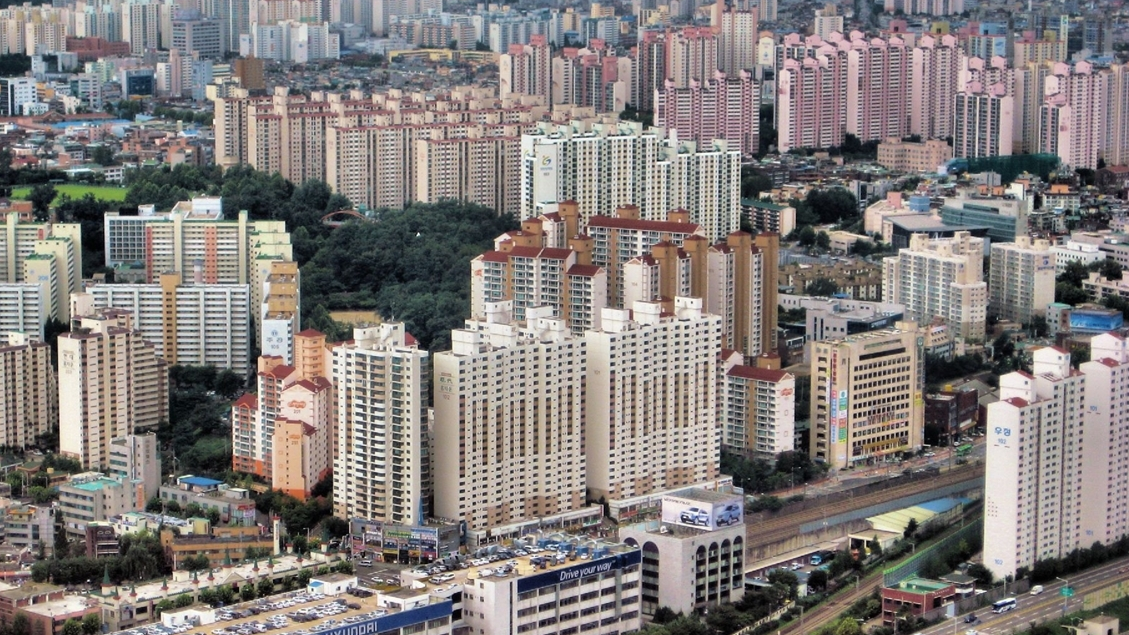
Seoul is struggling amid a housing shortage and runaway prices for both rental and for-sale properties, and developers can’t build units fast enough. I’m currently typing this from a 12-story condo building, which may soon be on the short side in a city where officials proposed 50-story housing developments to help cool off the market. Standing amidst Seoul’s high-rise apartment blocks got me thinking about all the showers, dishes, dirty socks, and… Where does all that water go?
As urban planners advocate for parts of the type of development that is now a reality in Seoul, careful planning is necessary to ensure our infrastructure will be up to the challenge of increased density.
I lived in Korea for a number of years in the 2010s, and it was that experience that turned me on to urban planning: Dense, mixed-use development. Walkable neighborhoods. Frequent and reliable public transit. I knew something interesting was going on here, even if I didn’t yet have the vocabulary to describe it. Returning to Korea as an urban planner made me wonder about the implications of that density.
Dense population and intensive land use
All that development comes with a cost. Not only are there more toilets, but replacing fields and forests with roads and rooftops means that, when it rains, there’s a lot less evapotranspiration and less infiltration – i.e., more water is going to the sewers or somewhere. And climatic changes associated with human activities mean more of it. As in Chicago, weather patterns in Seoul are trending towards increasingly frequent and severe storms.
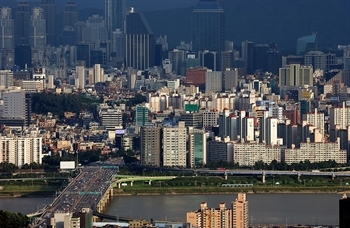
Seoul’s land area is almost identical to Chicago’s – 233 square miles and 234 square miles, respectively. But Seoul is more than three-and-a-half times as dense, with a 2020 population topping 9.9 million people. What can we learn from a city like this? I will not gloss over Korea’s significant social woes – including extreme income inequality, gender-based discrimination, worker’s rights issues, high suicide rates – but this blog began as an exploration of how a densely packed city manages its water. As more of the world’s population moves to cities, and planners continue to advocate for mixed-use development and walkable neighborhoods, what underlying infrastructure is needed?
Imagine my surprise when I found a whole museum dedicated to the subject!
Seoul Sewerage Science Museum
The Seoul Sewerage Science Museum is probably not high on most tourists’ itineraries. Let’s be honest, it’s probably not even on the list. The museum’s primary audience is groups of elementary and middle school students, but I’m proud to give it a five-star review.
The museum tells the story of Korea’s sewage and stormwater management activities over the centuries. Archeological digs found Bronze Age homes connected to a local drainage system. Interconnecting clay pipes were found in 4th– and 5th-century fortifications. And “large toilets” (further clarification was not provided) were found in palace buildings. The latter would have been for the exclusive use of members of the King’s household and government officials. For the average resident, streets were an open sewer, draining to local tributaries of the Han River.
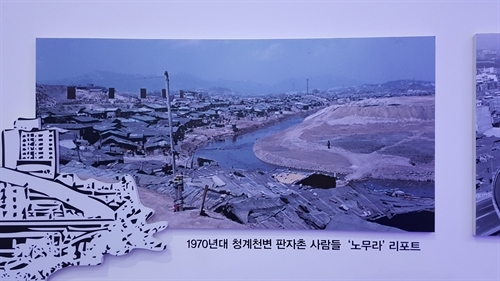
image by author at Seoul Sewerage Science Museum
One of the displays discussed dredging and streambank repairs undertaken by King Yeongjo in 1760, the city’s streams having become sedimented to the point of touching the bottoms of even the larger bridges. This early example of public works employed 50,000 individuals and included community engagement, with the king purportedly asking, “But now that the bridge is clogged, I want to reconstruct it. Do you want me to do that? […] I ask this out of fear that there is anyone among the other people who doesn’t want it.”
Modernizing the sewer system after the Korean War
Many in the urban planning world are familiar with the daylighting of the Cheonggye Stream. The project is lauded for its prioritization of natural amenities over car infrastructure and restored a historical connection to water in the heart of downtown Seoul. But the stream was originally covered because it was a public health risk.
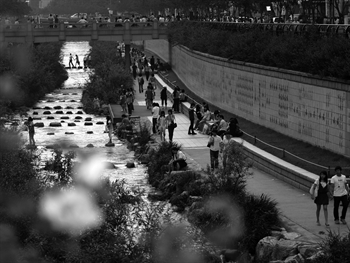
image courtesy Morning Calm Weekly Newspaper
Following the cessation of hostilities in the Korean War, many in the Korean peninsula suffered from poverty and deprivation, and ramshackle homes populated the banks of the Cheonggye Stream. Covering it was part of an effort to rebuild and modernize in the 1960s amidst waves of rapid urbanization and industrialization. The era saw many improvements to local infrastructure.
The Cheonggyecheon Sewage Treatment Plant was completed in 1976, and the sewer system continued to expand throughout the 1970s, with 62% of the city sewered by the end of the decade. In 1990, Seoul instituted a sewerage use fee to help pay for the infrastructure. (My father-in-law showed me this month’s bill, and the fee was 11,380 KRW, or about 9 to 10 USD; see MPC’s recent post about the benefits of stormwater utilities.) The city now has 100% sewer coverage and is divided into four districts, each draining to a separate wastewater treatment plant before discharging to the Han River, the city’s source for potable water.
Ever-changing conditions
Over the course of the 20th century, Seoul’s land area grew by more than 1,500%. In that same period, the population increased by nearly 4,000% and involved comprehensive changes to the landscape. From 1962 to 2015, the impervious ratio increased from 8% to 49%, and the direct runoff ratio jumped from 11% to 52%. Flooding is not a new thing in Seoul – the earliest recorded flood in historical documents dates to the 12th century – but now stormwater is managed through artificial drainage as opposed to natural infiltration and streams.
Intensive land use, of course, had a major impact on stormwater management and so, too, has the increase in wastewater from domestic and other uses. Eighty-seven percent of the city is served by combined sewers, where sewage and stormwater runoff are collected in the same pipe. (Chicago and many inner-ring suburbs have combined sewer systems.) Historically, two-thirds of Seoul’s annual rainfall is concentrated in the rainy season (June to September) and, often, in the form of typhoons and torrential downpours. During heavy rain events, wastewater treatment plants cannot treat the water fast enough, and untreated water is discharged directly to the city’s rivers and streams. Outside of the rainy season, combined sewers have generally been sufficient, but increasingly frequent and severe storms fueled by climate change are challenging those assumptions.
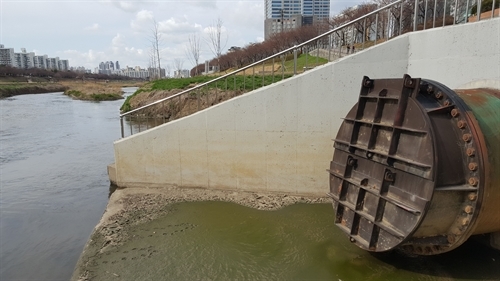
image by author
A major storm in July 2011 resulted in destruction of property and the loss of life, and landslides related to the storm closed highways, hospitals, and other critical infrastructure. Seoul was already in the midst of a plan to upgrade the sewer capacity by installing new, larger diameter pipes, constructing drainage basins for temporary storage in low-lying areas and those with undersized sewer infrastructure, upgrading pumping stations, and more. To mitigate the impact of large rain events which result in untreated sewage being discharged to the Han River, the city is constructing “first flush treatment facilities” to rapidly treat the initial flow of runoff which is likely to contain the greatest concentration of pollutants. But the city is still endeavoring to reduce the potential for flood damage and improve water quality.
Beyond this, the Seoul Metropolitan Government is subsidizing rainwater harvesting and green stormwater infrastructure and has installed solar arrays at their facilities. They are also exploring nutrient capture and energy recovery from the sewage treatment process, hoping to achieve 50% energy independence by 2050.
Planning for density is part and parcel of advocating for it
As more of the world’s population moves to cities, and planners continue to advocate for mixed-use development and walkable neighborhoods, what underlying infrastructure is needed?
Seoul recovered from war to become an economic powerhouse in a matter of decades. During that time, the population boomed, and the sewer system has experienced repeated cycles of upgrading and modernization, much of which has been reactionary.
As urban planners advocate for parts of the type of development that is now a reality in Seoul, careful planning is necessary to ensure our infrastructure will be up to the challenge of increased density. It is crucial that dense, mixed-use, walkable neighborhoods are carefully and thoughtfully designed to manage the increased demands on stormwater and wastewater infrastructure while preserving and reconnecting open space, protecting public health, and bolstering critical infrastructure.
